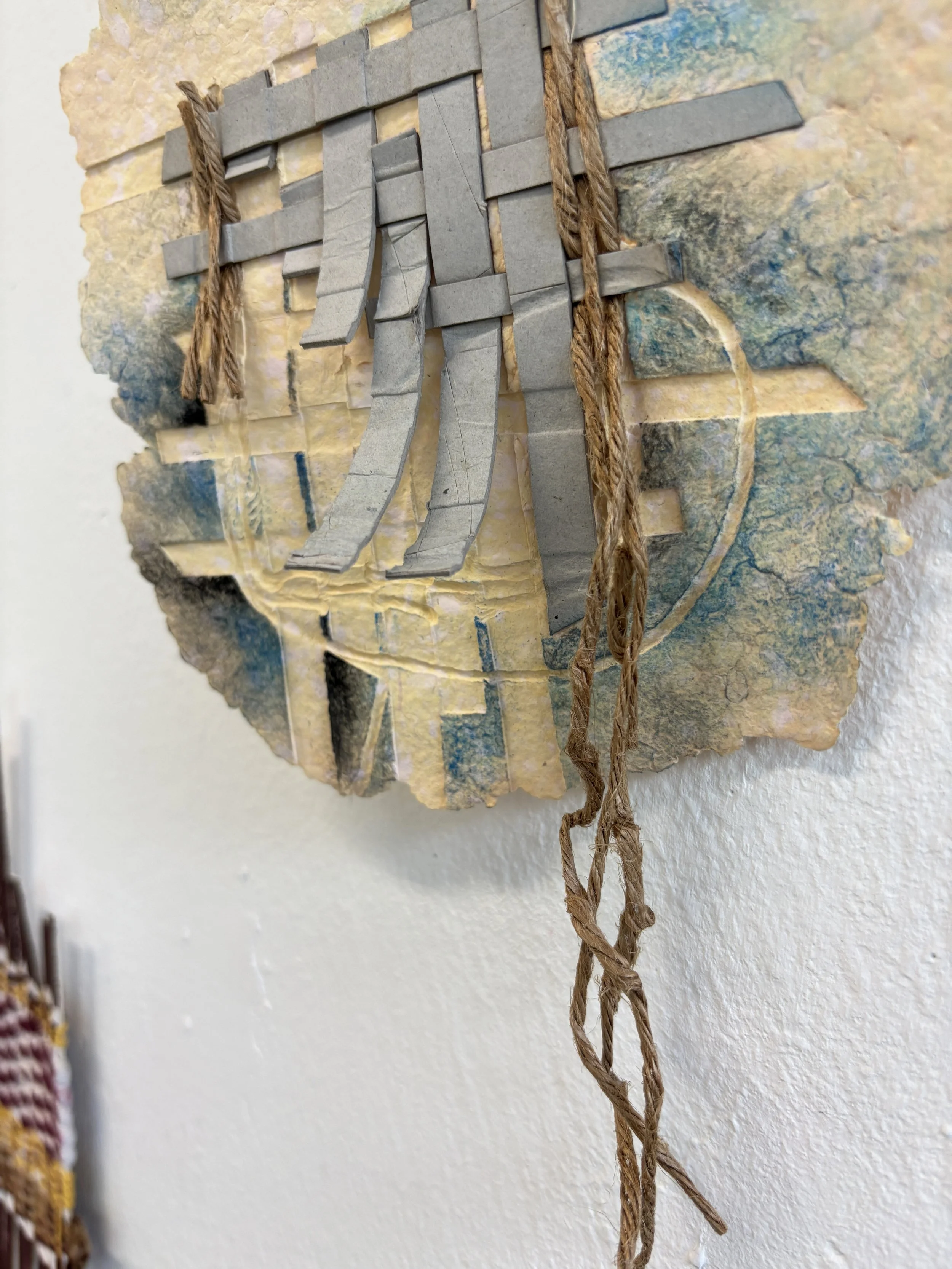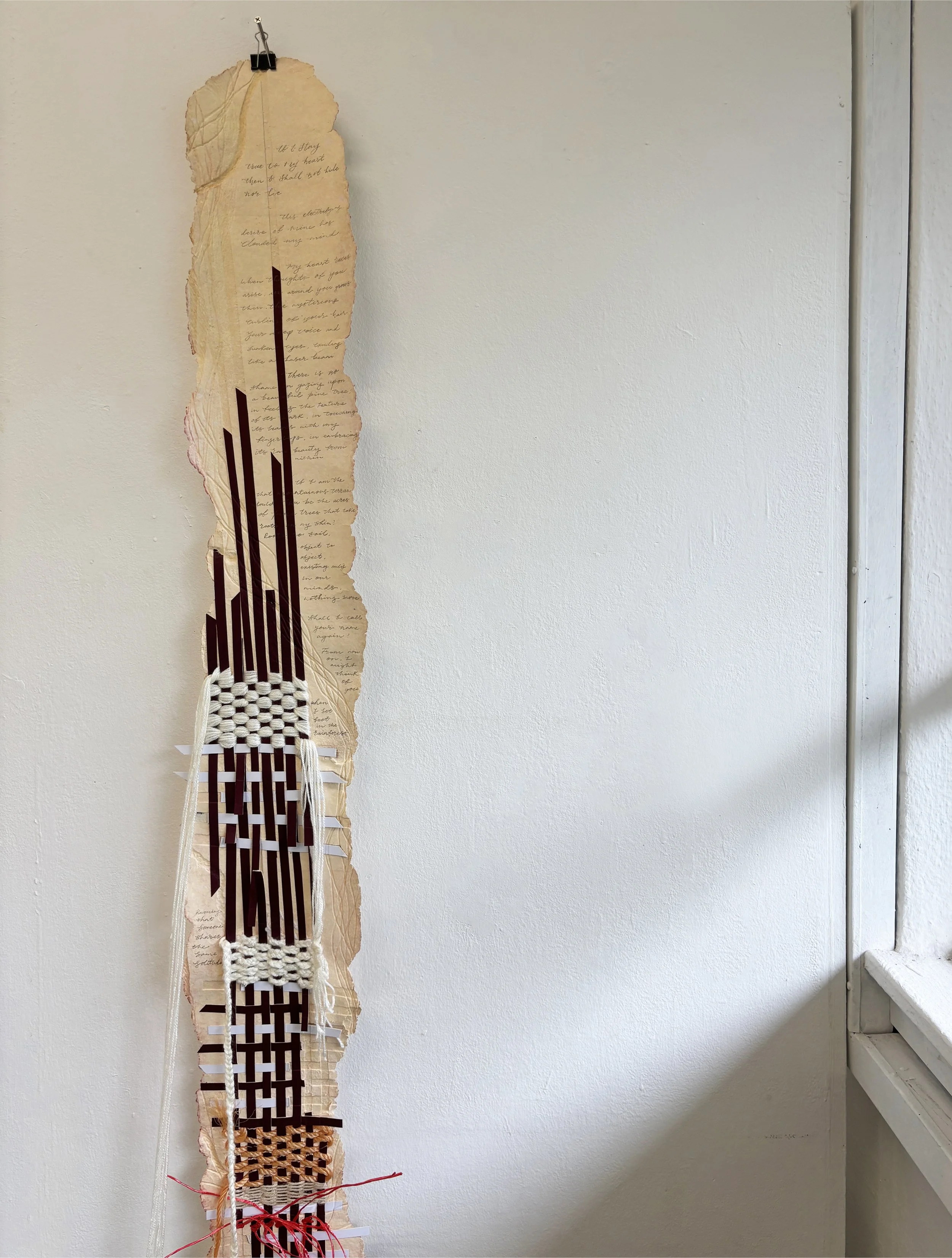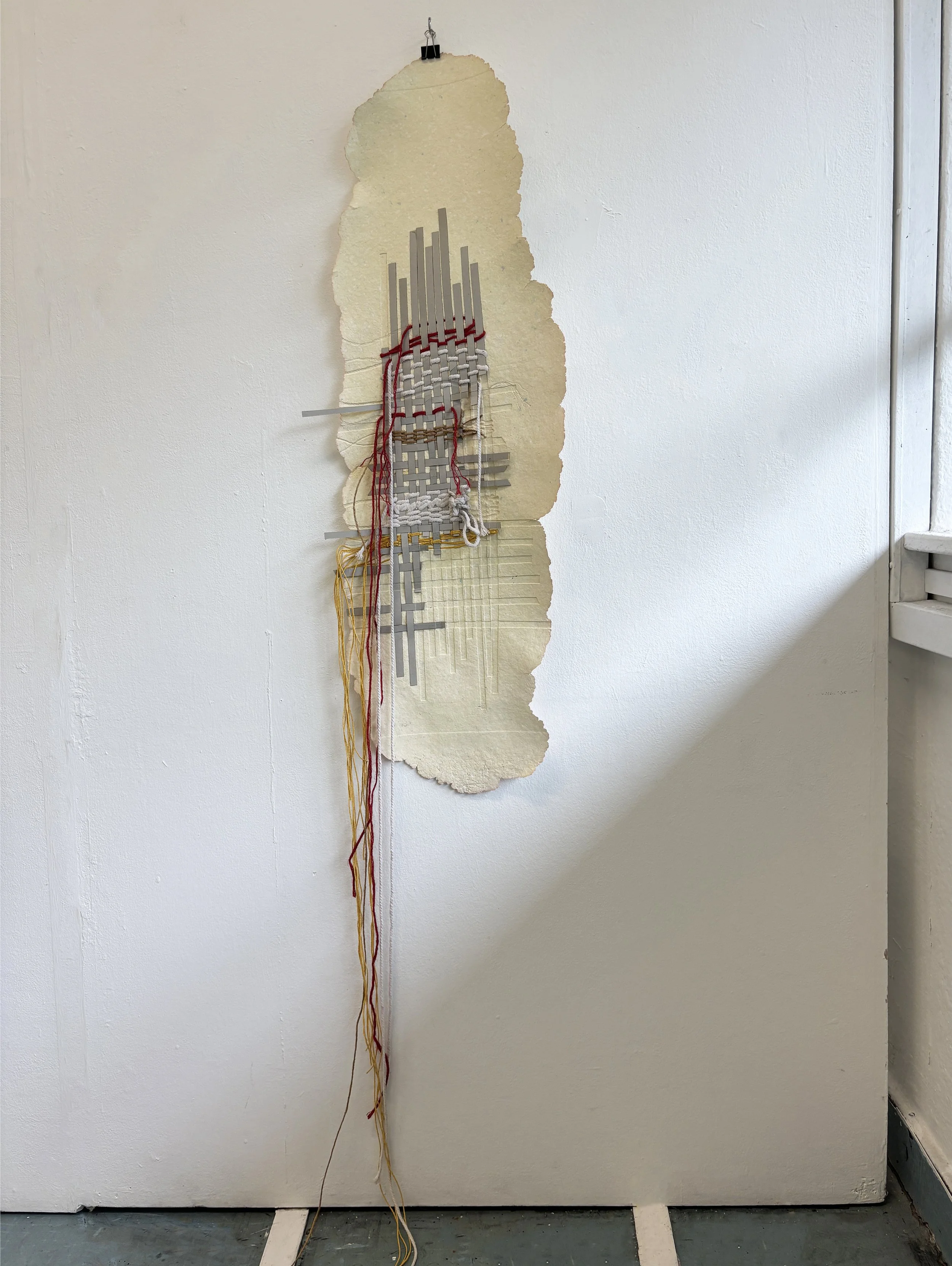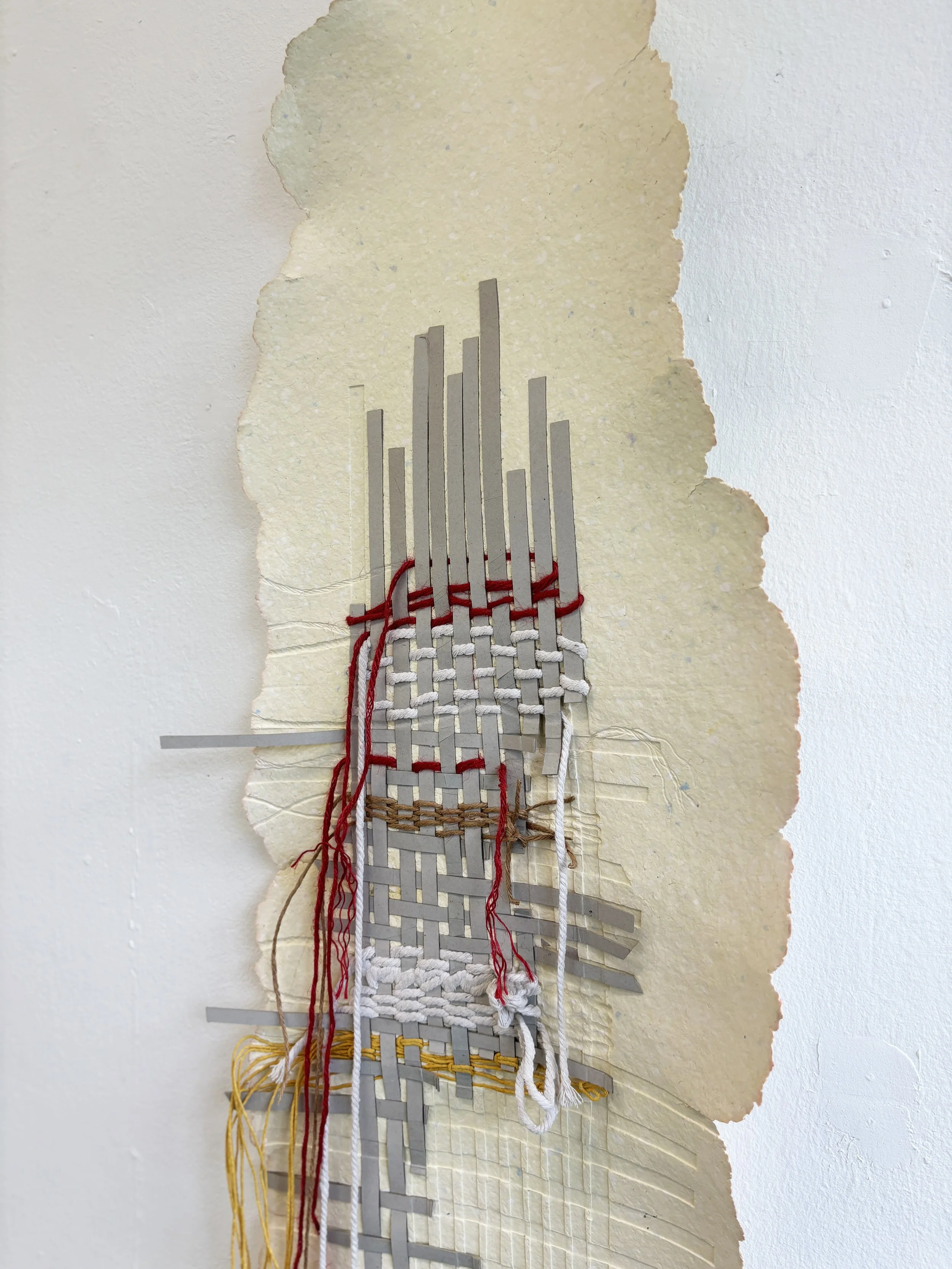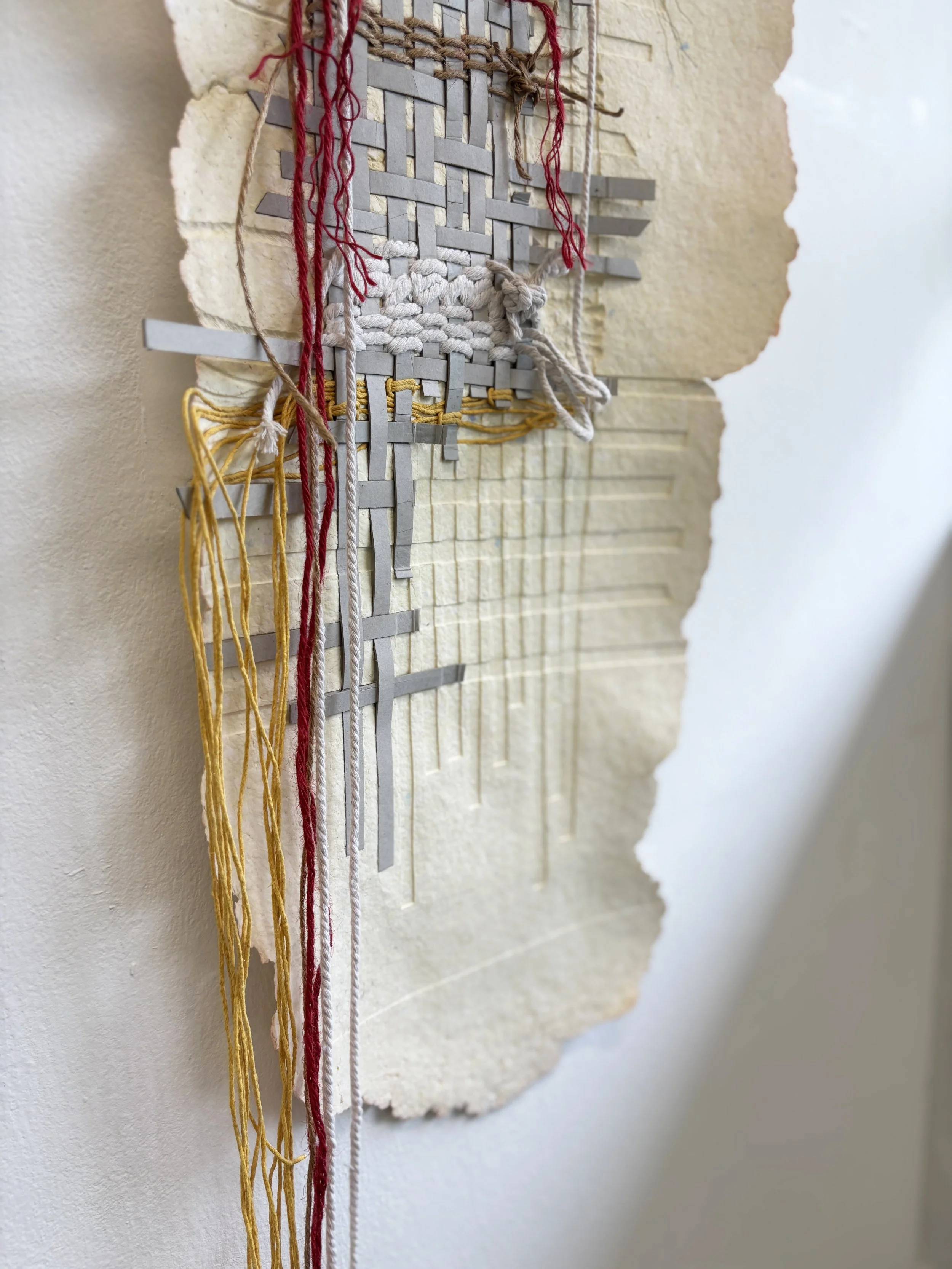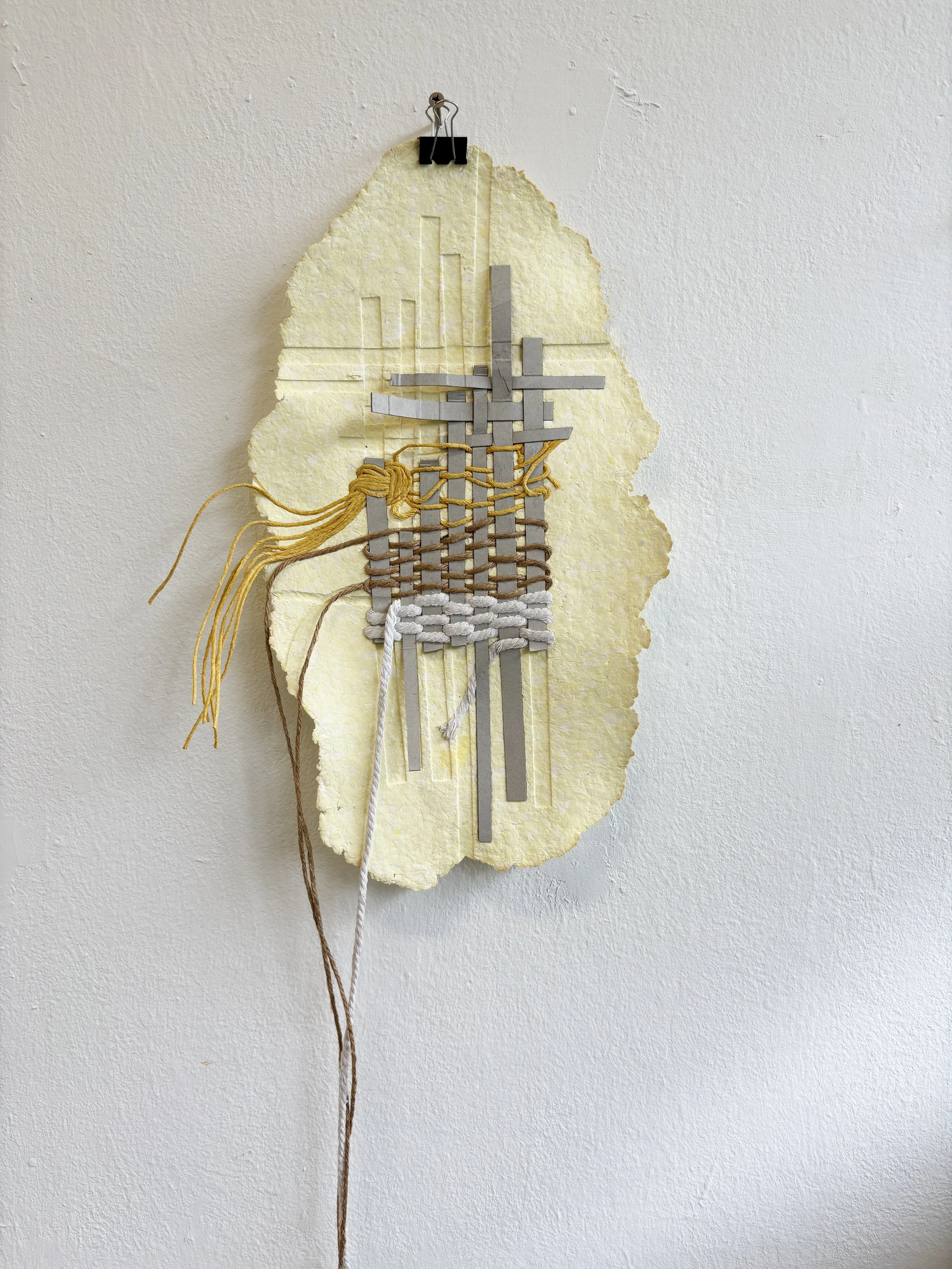Tender Rupture II, 2025
A series of Assemblage, Embossings and Monoprints.
Dimensions Variable
In the second phase of the Tender Rupture series, the project expands into a broader ontological inquiry other than the symbolic and the indexical—one that considers the autonomy, relationality, and alienation of objects and bodies. From the quiet archiving of personal history to the offering of a proposition; from the silence of speech impairment to the lyrical clarity of a poem; from the raw exposure of helplessness to the empowered act of voicing one’s truth with full autonomy. In my work, the matrix and the print—representing mother and child—are treated as autonomous yet interconnected objects. They are intimate but unknowable to each other, reflecting the withdrawal, collapse, and alienation that can occur over time (OOO). The relationship itself becomes an object: inaccessible, emotionally charged, and materially grounded.
Within this dynamic, I introduce a third object: the poem. This inscribed text resists both clarity and relation. It is not representational, but instead withholds meaning—introducing a lyrical rupture within the work. The poem object functions as a feminist act of refusal and opacity, becoming the “tender rupture” that refuses to resolve into the binary relationship of the mother or child, matrix or print.
Building upon the philosophical work of Elizabeth Grosz and Maurice Merleau-Ponty, the series reflects on embodiment as a continual process of becoming, and the body as a lived, sensory experience. The works take on a sensual materiality that invites both ontological and feminist reflections.
On the other hand, my approach to printmaking resists the reproductive function of the press. Each matrix, constructed from interwoven cardboard forms, can only pass through the press once—the intense pressure distorts and flattens it after a single impression, destroying its ability to replicate. This singular gesture parallels the viscosity and vulnerability of the mothering body—exposed to pressure (matrix/mother), transformed through process, and ultimately irreproducible. The matrix is no longer a tool of duplication, but an embodied form, suggesting viscera, rupture, and the entangled complexity of becoming. The printed form (print/the child) is not a “copy” but a trace, an index of bodily memory and material encounter. In this way, the medium becomes not just a method, but a material argument.


